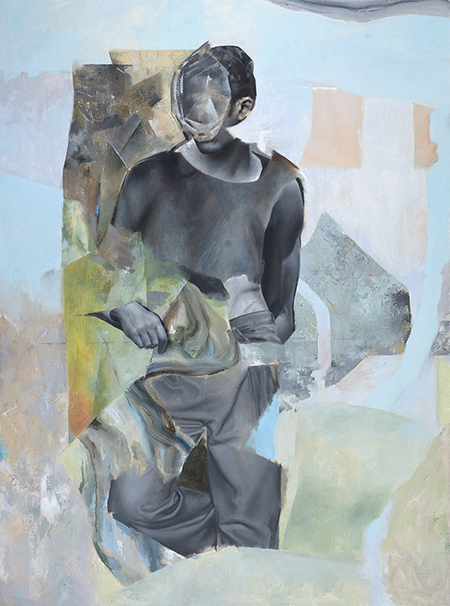
Continuing through October 22, 2016
In a recent website posting, the art critic John Seed humorously dubbed a current trend — traditional realism mixed with painterly disruptions — "discombobulated art." Seed heretically dares to defend traditional painting against aesthetic zealots, so he’s having some fun with art-world fad and fashion. Another way to look at this mixed-mode painting, however, is a subtle return to figuration, somewhat analogous to the “bare foot emerging from the chaos of color, half-tints and vague shadows that made up a dim, formless fog” from Balzac’s ironic story of the mad painter Frenhofer in "The Unfinished Masterpiece." Cézanne, who fused realist and abstract tendencies in a new synthesis, identified with the mad Frenhofer.
Kirstine Reiner Hansen is known in the Bay Area as a skilled realist painter, inspired by both old and modernist masters (Rembrandt, Caravaggio, Bacon). In 2010, she began making imaginary self-portraits. In recent years she has begun painting the collages she has been making for years, using images from various art history and fashion sources both in print and online; she likens her digital stitching together of images with the fashion design that her mother did. Hansen improvises from the selected motifs, utilizing accidents and her conservable painting chops, so that the works transcend the source materials. Her rendering of these JPEG swatches is so skillfully done that the works operate nicely as trompe-l’oeil illusionism of an odd sort.
The idea of disruption perfectly fits our unstable times. Reiner Hansen’s twenty-one faux collages, with their leggy models, lustrous fabrics and arms-akimbo stances swathed in veils of painterly improvisation, nicely represent the “kaleidoscopic” hall-of-mirrors world we live in. Larry Rivers’ figure drawings come to mind, as do, occasionally, dress-pattern templates and seamstresses’ work tables. Three paintings, probably based on cover-girl head shots, and possibly offshoots from Reiner’s self-portrait "Facial Fallout" series, "Camo,” “Transformer” and “Fractured Blonde,” suggest the commercial objectification of beauty by, say, the fifth-century BC Greek painter Zeuxis, combining the best features of different women, or by contemporary gimlet-eyed owners of beauty pageants. Poor fellows (and gals) crawling like Hamlet between heaven and earth, between the unreal perfect and the imperfect real, Frenhofer, c’est nous!
